King Charles inherited 45,667 acres of land across England & Wales, worth around £650m, generating income of £24m pa. He didn’t pay a single penny in inheritance tax & will only pay income tax if he volunteers. On the 6th May you will pay to put a crown on his head. These stark comments were relayed on a Twitter feed and, given the opaqueness of the Royal finances in many areas, the numbers are probably as reliable as any others.
It will be interesting to note which Australians will be part of the Forelock Shuffle to Westminster Abbey. How many avowed Republicans will be following the Prime Minister who, given his dainty ambivalence, will go and try to dampen criticism by offering to have a Regal Party on his plane, a modified KC-30A Multi-Role Tanker Transport, which in itself is a modified Airbus A330 jet, which can accommodate 100 passengers.
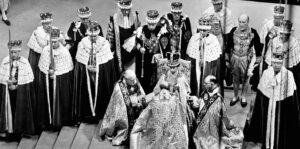
But then, at the Queen’s Coronation in 1953, 250 seats were reserved for Australians headed by the then Prime Minister, Robert Menzies. There were 8,000 invitations issued. There was an Australian military contingent which participated in the changing of the Guard at Buckingham Palace. Two Australian warships participated in a Spithead Review of 300 ships. Notably, the commentator on British Pathe reported that the crews of British and foreign ships all cheered. Foreign? It should be noted our Australian nationality on our passports only occurred in 1949; the words “British Passport” was retained on our passports until 1967.
The coronation of Charles III provides an opportunity to dispense with all the seductive pomp at which the British are very good – it appeals to all of the Cringe in Australians, afflicted by an inferiority complex which also guides the bunyip aristocracy.
We have a High Commissioner in London – let him be Australia’s representative. That’s sufficient.
But no, no, no – maybe Albanese will still be Prime Minister when William V ascends the British throne. By that time Australia should be a republic.
But then that is Australia Dreaming.
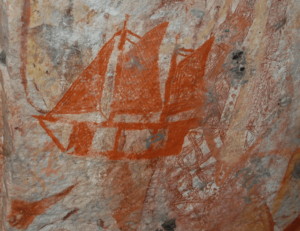
The Flag
One of the most difficult changes in Australia would be to change the flag. My first response years ago would have been dismissive; namely “who cares?”
We are used to it, and then all our history is mixed with histrionics associated with preservation of the hoar frost for those who still yearn for the Mother Country and have never forgiven the Labor Party for doing away with Imperial Honours. The preservation of the Union Jack in the Flag would preserve the hoar on the railing post.
But I suspect most people couldn’t care less. There is not a strong sense of wrapping ourselves in the Australian flag and crying “patriotism”. Yet the process to change the Australian Flag is formidable. The current Australian flag was officially raised for the first time on 3rd September 1901 at the Royal Exhibition Buildings, Melbourne, unveiled by Australia’s first Prime Minister, Edmund Barton. The design was the product of a competition held to find a national flag for the newly federated Australian nation. The competition attracted 32,832 entries from Australia and overseas; five individuals shared the honour of submitting the winning design. Apart from a few minor differences in the magnitude and number of points on the stars these people had designed what we now know as the Australian Flag.
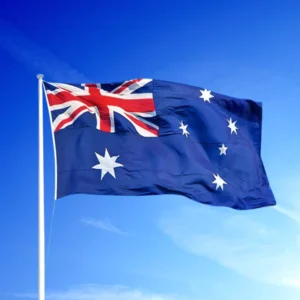
The Australian flag was called the Australian or Commonwealth Blue Ensign until the Flags Act of 1953 gave it the title of Australian National Flag, confirming it as the chief national symbol by law, custom and tradition. This fact was recognised in 1996 when the Governor-General, Sir William Deane, proclaimed 3 September “Australian National Flag Day”.
New Zealand in the past decade spent NZ$23m in attempting to change the flag, a matter dear to the then Prime Minister, John Keys. He persuasively said that the similarity in the Australian and New Zealand flags was one reason to change. It should be noted that Australia, New Zealand, Tuvalu, and Fiji are the only nations to retain the symbol of British colonialism. Moreover, Fiji is a republic.
Strangely, the State of Hawaii retains the Union Jack embroidered in its flag. Curiously the stripes on the Hawaiian flag are similar to those on the Russian flag. The construction of Hawaii’s flag occurred when the indigenous Hawaiian rulers were ingratiating themselves with the perceived powerful European powers in the Pacific.
In the end, changing our flag is indeed formidable, but not insurmountable. How did the Canadians do it? After all, Canada has always been the favourite place for the Royals to visit, in particular the late Queen. The Canadians eschewed a referendum. They concentrated on the emblem of the maple leaf, set up a Parliamentary Committee, and then a process that involved progressive simplification of the design to the single red leaf.
On 22 October 1964, the committee voted in favour of the single-leaf concept. Two months later the House of Commons approved the design, followed shortly after by the Senate. The Liberal Ontario politician, John Matheson, one of the flag committee’s members, is often credited with achieving consensus within the committee and helping to end the Great Flag Debate in Parliament. The lesson is: keep it simple, use a universally recognised symbol, exert leadership and take nothing for granted.
I wonder if Keys had insisted on the silver fern and an “all black” background with or without the Southern Cross – and stuck to it – would the New Zealanders not have retained their current flag.
Gough Whitlam, in an interview in 1994, insisted that arguments about servicemen and women serving under the existing Flag in all of Australia’s wars were untrue. He said he had been the last Prime Minister to have served under the flag, (he was in the air force in World War II), but that Flag had been a red, not a blue, one and at RAAF funerals the casket had been draped in the Union Jack, not the Australian flag. The current flag had not been formally adopted until the enactment of the Flags Act of 1953, and had only been used in one war, Vietnam, and then only on land. The navy and air force continued to use their own flags.
“We got this blue one because Menzies did not like red,” said Whitlam, adding that his Liberal predecessor had once used the New Zealand flag while on a visit to Canada. Trust Billy McMahon to get it wrong.
Whitlam went on to say, “We need an Australian as head of state who will be accepted by other heads of state in the world and we need a flag which is identified as Australian and accepted by all — the original Australians and those who have come here from overseas.”
Whitlam said he favoured retaining that part of the flag that was distinctively Australian — the Southern Cross.
Keys made the mistake of trying to establish a consensus, probably impossible when you need to obtain change when it is a matter of taste and to convince those who believe the flag is a sacred relic.
 First, I would remove the Union Jack, and re-position the Southern Cross in the night sky. I would prefer wattle as emblematic given that the Australian colours are not dark blue, but green and gold. To me, wattle provides the gold and the blue green of the eucalyptus as the background. In spring, in the southern states, the land is a tapestry of green and gold. Why do our representatives dress in a grass green colour given that this is a country of blue mountains, which essentially are the eucalyptus colour from a distance – and a suitable colour acknowledging this green merging into the blue should not be a great challenge to mix?
First, I would remove the Union Jack, and re-position the Southern Cross in the night sky. I would prefer wattle as emblematic given that the Australian colours are not dark blue, but green and gold. To me, wattle provides the gold and the blue green of the eucalyptus as the background. In spring, in the southern states, the land is a tapestry of green and gold. Why do our representatives dress in a grass green colour given that this is a country of blue mountains, which essentially are the eucalyptus colour from a distance – and a suitable colour acknowledging this green merging into the blue should not be a great challenge to mix?
Then maybe Australia should have “a jury” to determine how to match the elements and then, as with Canada, the most suitable arrangement would evolve.
I must say, I have form. When I was a senior staffer, I was asked what would be discussed at the next parliamentary party meeting, the last meeting having been consumed with discussion of the Flag. I replied I supposed it would be the Party’s policy on heraldic symbols. It was reported in the media. There were some in the Party who were not amused. It gave some insight into the importance that I, as a young man, ascribed to the Flag, to which I alluded at the start of this piece. Maybe age has modified my flippancy.
Jackals and Hyenas Abroad
“Rumore” in Italian is the word for “noise”. Recently, someone commented that I (née big Johnnie) had been kicked out of the Liberal Party. One person close to me said I should wear that as a badge of honour.
 Others said to me, why bother? Still a lie is a lie and needs to be corrected. Now the political process, as with any combative arrangement, attracts the jackals and hyenas to feed on the carrion of this process. By this I refer to the detritus of innuendo and lies served up in the clubs, and board rooms of Australia amid the sly chortles wreathed in cigar smoke and the glittering whisky decanters on the pour.
Others said to me, why bother? Still a lie is a lie and needs to be corrected. Now the political process, as with any combative arrangement, attracts the jackals and hyenas to feed on the carrion of this process. By this I refer to the detritus of innuendo and lies served up in the clubs, and board rooms of Australia amid the sly chortles wreathed in cigar smoke and the glittering whisky decanters on the pour.
I was a member of the Liberal Party for about a decade in the seventies and early eighties. In that time, I was a political staffer; organised a centrist discussion group called “Grapple” with assistance from other like-minded so-called “small L liberals”, an unfortunate moniker; was a branch president for a few years and failed in three tilts to gain pre-selection for outer Melbourne parliament seats.
When I moved to Sydney in 1979, I cut my ties with “Grapple” and joined the then Australian Institute of Political Science. The Institute received funding then from some of the big Australian companies, but the money spinner was the Summer School, where aspiring politicians, and those interested in political science could debate a particular theme over the long weekend in January. The Institute produced the Australian Quarterly.
The Institute owed its existence to members of the Sydney establishment led by Norman Cowper who, in 1932, set it up as a reaction to a growth of the Fascist New Guard led by Eric Campbell on the extreme right. On the left was Jack Lang, the NSW Premier with his defiant populism, which threatened the established order in a far different way from Campbell. Nevertheless, both were authoritarian as most extreme politicians are whether they are left or right.
In the early years of the Depression revolution was in the air. How serious in retrospect who knows, but one of the results was the Australian Institute of Political Science was formed. Cowper was shrewd in that in the construction of the Sydney-based Board he invited Labor Party members to join the Board – and thus for many years this bipartisan governance persisted. There were also Melbourne directors, who would be present at the Summer School. It was all very civilised; the only problem was that the Institute was running out of money by the time I joined.
There was enough money to celebrate the 50th anniversary, which I organised and invited David Owen, who was one of the leaders of Social Democrats and at that time considered as a future British Prime Minister. Unlike most politicians these days, he charged nothing for his appearance fee, but we engineered a first class airfare return to London plus accommodation.
The celebration was centred around the first Cowper Oration. Norman Cowper, then 87 years old, attended. The celebration was a success, which surprised some on the Board which had become a comfortable place for mates to meet when money was not a problem. I was an outsider, a Melburnian. The Institute leaned towards the Labor party. Despite the 50th anniversary, which was just a temporary fillip, the financial situation was increasingly dire and, not for the first time in such a situation, a Board turned to me to become the Chair and solve the resultant problem of potential insolvency.
In the mid 1980s, certainly the mood for change coincided if not clashed within the Institute. The Summer school became non-viable. Where once the Summer School was “the only game in town”, now the growth of forums, symposia, workshops and all sorts of scientific meetings were competing for the space the Institute once had to itself. Politics was becoming more partisan and trying to define the political centre became impossible with the bipartisan adoption of elements of neoliberalism, banging the drum of individual freedom and the contempt for government. In other words, there was a certain pessimism about the future of the AIPS with funds drying up.
At this time, there was a move by some of the Melbourne directors who were members of the Liberal Party headed by Richard Alston to take the Institute to Melbourne and convert it into a right wing think tank. There was no plan just an assertion to trust him while his cabal appropriated the name of the Institute. Nevertheless, the unseen hand of John Elliot, then at the height of his “Fosterisation” hubris, was probably behind funding an Alston-led organisation.
By this time I had let my Liberal Party membership lapse; but the action in resisting this move of the Institute and having the Sydney directors support me in resisting this move, did not win me any friends in the Victorian Branch of the Liberal Party of which I once was a member. Then I took the secretariat of the Institute into my office and it survived, as it does today. I was fortunate to have Gay Davidson, a senior political journalist in Canberra, as my Vice-President for much of the following decade. We retained Government funding. Australian Quarterly survived with people such as Ross Garnaut editing it for a time.
No, I was not kicked out of the Liberal Party. I left it with the minimum of fuss.
I resigned as Chair of the Australian Institute of Politics and Science (the name was changed during my stewardship to better reflect its change in function) after 18 years in 2002 and was succeeded by Rick McLean. The Institute and Australian Quarterly remain to this day.
Dauber or just Dabbler
When I was searching for a site for University of Melbourne Family Club Child Care Centre in the late 60s, I had a strange encounter when I met a Miss Dauber who was, if not the only surviving descendent of Horatio Larcher, certainly a major beneficiary of his estate. Larcher, according in his brief 1942 obituary, had been born in London in 1854, and migrated to Victoria in 1871. He built up one of the largest retail distribution businesses of milk in Melbourne. To illustrate this, by 1907 he was advertising his Farm Dairy at 45 Moor St Fitzroy. At about that time, pasteurisation was introduced, and his dairy continued to increase its output from 50 to 100 quarts daily in 1896 to 10,000 quarts a day in 1922.
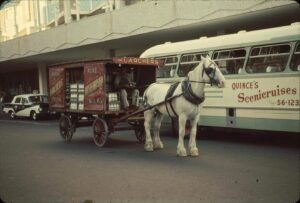
Returning from the UK on a visit in 1936, Larcher had brought samples of sterilised and “homogenised” milk, very popular in England. The cream was pressed into the milk and the heat sterilised. Kept in a cool place, if the bottle was not opened, Larcher was quoted as saying the milk would last indefinitely. He brought back samples. “Such milk, which could be sold for about a penny a pint more than ordinary milk, would be invaluable in Australia for transportation over any distance.” He seemed to be describing ultra-pasteurisation.
In Victoria, the Milk Pasteurization Act 1958 specified that “no one should sell or deliver milk except milk pasteurised at licensed pasteurising premises and bottled and sealed as prescribed.” At that time, only about half the milk sold in Victoria was pasteurised. I was in Trinity College at the University of Melbourne then and we had cows grazing on the College grounds; we consumed the milk from the College cows – unpasteurised. No-one to my knowledge contracted bovine tuberculosis nor brucellosis.
Therefore, Larchers had distributed milk through major generational change when at first milk needed to be purchased almost daily from the milkman, unless the family had an ice chest or Coolgardie safe or the new-fangled refrigerator.
The Larcher method of distribution was the horse drawn cart and the horses were stabled on the Moor Street premises, where Larcher himself lived. While there is a photograph of a Larcher horse and cart outside the Southern Cross in 1966, it was not long after that when Larchers closed.
The times had now changed irrevocably. The whole method of distribution was now through the corner store or the supermarket where milk could be refrigerated. The road traffic had increased such that the horse and cart with streets covered with horse excrement was no longer the best method of retaining or distributing milk. This freed up the stables, with their extensive courtyard, in a place not too far from the University of Melbourne.
Miss Dauber was interested in the conversion of the stables into a child-minding centre, and thus I entered into negotiation and I found out I was drawn into a gossamer web. Miss Dauber was a delicate woman whose age was difficult to define by just looking at her finely lined face. She seemed somewhat detached but at the same time she affected coquettish behaviour. There was another young man competing for the property to provide the child-minding centre, but he had no overt experience; even then his strange persona concealed a dark side which ultimately led to him being “sectioned” and held securely in a mental health facility for a period.
With my then young family I visited Miss Dauber on several occasions at her extensive country property at Healesville. What I remember clearly was the magnificent cork tree. I had never seen a fully grown cork tree with its distinctive bark. Funny what you remember, but after a while I realised that, despite her elegant afternoon tea hospitality, I was being strung along, as if courting for Miss Dauber’s hand, much to her enjoyment.
In the words of a nineteenth century novel, I withdrew, thanked her with a flourish of effusiveness. and sought more successfully another premises, this one in Carlton. It was a complete break. I never knew what ultimately happened to Miss Dauber. In a later architectural history of Inner Melbourne, I note reference to a Dauber Child Minding Centre in 1971 located in the Moor Street premises.
Today, it is an undistinguished block of flats. But the Larcher chimney still exists as a remnant of its glory days.
The Melbourne University Family Club with its premises in Carlton has remained, a pioneer in early childhood development.
Mouse Whisper
Jeff Tiedrich is a 65 year old New York graphic designer known since 2000 for his acerbic blogs. He has played guitar in the band Alligator and looks uncannily like Eric Clapton.
After the recent Michigan massacre, he tweeted: Well-regulated militia opens fire on Michigan State University in East Lansing. Cheap thoughts and useless prayers now being rushed to the scene … more on this soon-to-be-forgotten-and-then-repeated story-as-it develops.


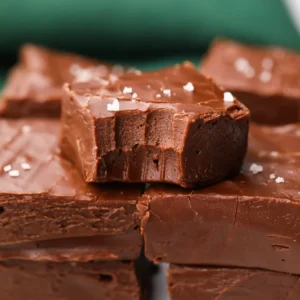

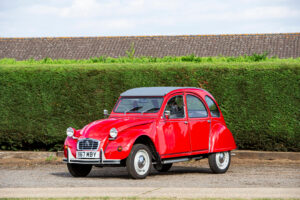
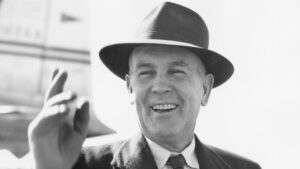


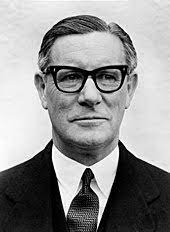



 The Defence force spends somewhere in the region of $40m a year in recruitment of men and women to the army, navy and air force. Nowhere in the advertisements is the message, join the defence force to be killed fighting for your country. Rather, learn skills, enjoy yourself.
The Defence force spends somewhere in the region of $40m a year in recruitment of men and women to the army, navy and air force. Nowhere in the advertisements is the message, join the defence force to be killed fighting for your country. Rather, learn skills, enjoy yourself.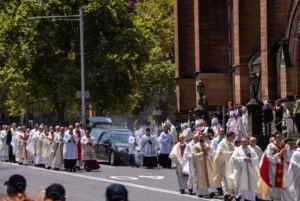 The other perception of the Church is how ludicrous some of the regalia looks when placed alongside stated conservative attitudes. After all, look at the fancy dress of the church dignitaries and then fast forward to the forthcoming dress-ups for mardi gras by the queer dignitaries.
The other perception of the Church is how ludicrous some of the regalia looks when placed alongside stated conservative attitudes. After all, look at the fancy dress of the church dignitaries and then fast forward to the forthcoming dress-ups for mardi gras by the queer dignitaries.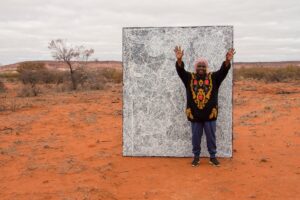
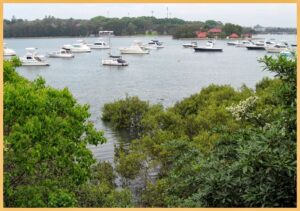 When I used to run the Iron Cove, the mangroves were there, but not to the height and extent as the mangrove forest now. It used to be stunted and did not exhibit its current lushness – rather it was a swamp bordering on the estuary, the water flowing tidally, and at ebbtide, it was a muddy swamp with just a thin cover of mangroves. Now it is different and given the mangrove so essential for water hygiene, maybe the underlying pollution will diminish.
When I used to run the Iron Cove, the mangroves were there, but not to the height and extent as the mangrove forest now. It used to be stunted and did not exhibit its current lushness – rather it was a swamp bordering on the estuary, the water flowing tidally, and at ebbtide, it was a muddy swamp with just a thin cover of mangroves. Now it is different and given the mangrove so essential for water hygiene, maybe the underlying pollution will diminish.




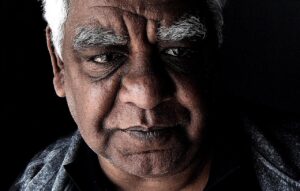
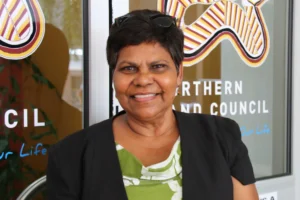

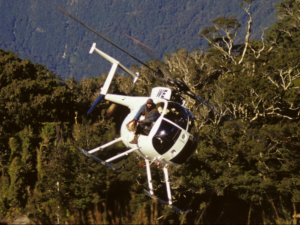
 Deer have a number of advantages. There is this lack of recognition of how dangerous they are. Unlike feral horses in the high country, they hide away from urban Australia. Their destructive effect is complicated by perceptions of deer, either being dewy-eyed fawns – the bambi effect, or alternatively projecting the majesty of the Monarch of the Glen. The hunter lobby is very powerful given that, in both the Victorian and New South Wales parliaments, there are representatives of Shooters, Fishers and Farmers Party.
Deer have a number of advantages. There is this lack of recognition of how dangerous they are. Unlike feral horses in the high country, they hide away from urban Australia. Their destructive effect is complicated by perceptions of deer, either being dewy-eyed fawns – the bambi effect, or alternatively projecting the majesty of the Monarch of the Glen. The hunter lobby is very powerful given that, in both the Victorian and New South Wales parliaments, there are representatives of Shooters, Fishers and Farmers Party.
 I once knew a bloke who played “chicken” with his fuel supply. He would not fill up until the tank was nearly empty. It was his defining quirk. It was how he played destiny. On one occasion when he was completely out of fuel, he had to roll down a hill where fortunately at the foot was a service station. However, he was always proud when he had less than five kilometres worth in the tank, before he filled it.
I once knew a bloke who played “chicken” with his fuel supply. He would not fill up until the tank was nearly empty. It was his defining quirk. It was how he played destiny. On one occasion when he was completely out of fuel, he had to roll down a hill where fortunately at the foot was a service station. However, he was always proud when he had less than five kilometres worth in the tank, before he filled it.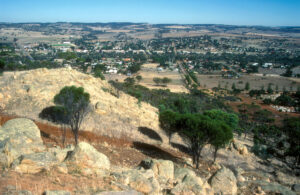

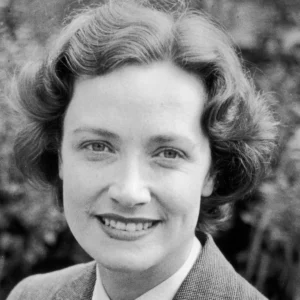

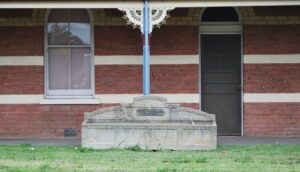



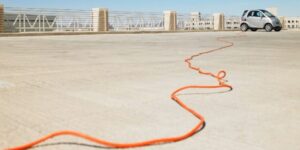
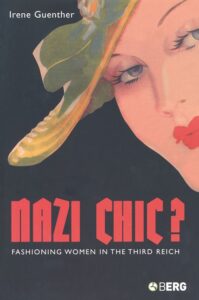 There is a term “Nazi chic” which, as one writer wrote: “From high end designers to campy trends like “swastikawaii”, ” the iconography of Nazi style has elbowed its way through history, whether its wearers promote its ideology or not.” You see echoes of this in the uniform of those services which dress in dark leathers and buzz round on motorcycles in pursuit of the errant motorist. In fact, if you look at a photo of a German officer such as General Rommel, you see a man in a well-tailored uniform, and the fashionista that appropriate such a uniform, they do not seek meaning, rather they concentrate on appearance.
There is a term “Nazi chic” which, as one writer wrote: “From high end designers to campy trends like “swastikawaii”, ” the iconography of Nazi style has elbowed its way through history, whether its wearers promote its ideology or not.” You see echoes of this in the uniform of those services which dress in dark leathers and buzz round on motorcycles in pursuit of the errant motorist. In fact, if you look at a photo of a German officer such as General Rommel, you see a man in a well-tailored uniform, and the fashionista that appropriate such a uniform, they do not seek meaning, rather they concentrate on appearance.
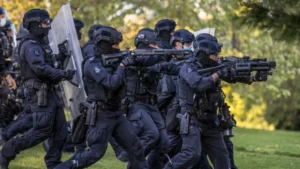
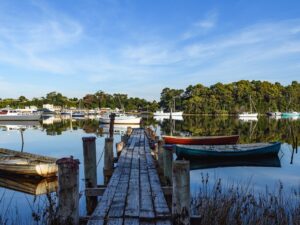
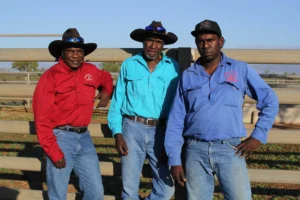 But what saddened me in watching the Brunette Downs episode, is that there seemed to be little interaction at a personal level between whitefella and blackfella. Sure as one the Aboriginal men, Elvis said working conditions had vastly improved – and one of the older white men entrusted to training the newcomers said how much he had learnt from the Aboriginal stockmen, a theme not further pursued as Backroads reverted to the Blue Hills view of the Bush.
But what saddened me in watching the Brunette Downs episode, is that there seemed to be little interaction at a personal level between whitefella and blackfella. Sure as one the Aboriginal men, Elvis said working conditions had vastly improved – and one of the older white men entrusted to training the newcomers said how much he had learnt from the Aboriginal stockmen, a theme not further pursued as Backroads reverted to the Blue Hills view of the Bush.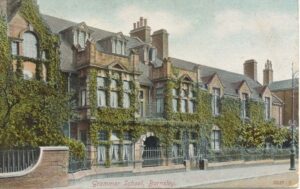
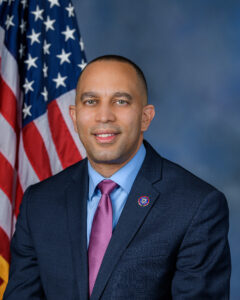



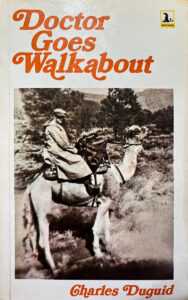 Charles Duguid, who lived to 102, wrote these words. He was born in the same year as my grandmother in 1884. Thus, I have a personal acquaintance with the age in which he lived. Duguid wrote this reminiscence, “Doctor Goes Walkabout”, when he was 82. It detailed his life from a Scottish childhood and early adult life as a young doctor.
Charles Duguid, who lived to 102, wrote these words. He was born in the same year as my grandmother in 1884. Thus, I have a personal acquaintance with the age in which he lived. Duguid wrote this reminiscence, “Doctor Goes Walkabout”, when he was 82. It detailed his life from a Scottish childhood and early adult life as a young doctor.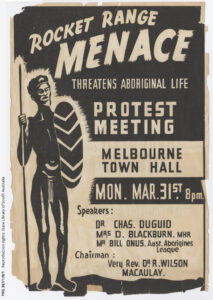 Later in the 1950s he again appeared again more worried about his own standing. When the Government alienated Pitjantjatjara Lands for the Woomera Rocket Range, his reaction was not that of an outraged defender of this people who had befriended. He certainly resigned from the Aboriginal Protection Board when they agreed to Woomera, but his disapproval seemed to have been assuaged by the appointment of a “good white man” by the government – a man who looked after the sheep at the Ernabella Station as the Aboriginal Protector. He was “ideally suited to the job”. I am not sure that Duguid realised how that could be interpreted, as likening the Aboriginal people to sheep. But remember, for the devout, a reference to “sheep” is not derogatory.
Later in the 1950s he again appeared again more worried about his own standing. When the Government alienated Pitjantjatjara Lands for the Woomera Rocket Range, his reaction was not that of an outraged defender of this people who had befriended. He certainly resigned from the Aboriginal Protection Board when they agreed to Woomera, but his disapproval seemed to have been assuaged by the appointment of a “good white man” by the government – a man who looked after the sheep at the Ernabella Station as the Aboriginal Protector. He was “ideally suited to the job”. I am not sure that Duguid realised how that could be interpreted, as likening the Aboriginal people to sheep. But remember, for the devout, a reference to “sheep” is not derogatory. I had just finished listening to The Summer Knows, the theme song of The Summer of ’42 written and played by the late Michel Legrand. The essay below by Roger Ebert describes for him the inevitability of the distortion of the nostalgia for that time one had a brief relationship with an older woman. It is one of those experiences with all the magic of a fairy tale which, as you grow older and the evocative last words of the film “I never saw her again” exaggerate the poignancy but also the unreality of this experience – not the tragedy that it originally seemed, but a privilege to have briefly believed one was in love. And perhaps one was, but I am no longer the adolescent to verify that emotion.
I had just finished listening to The Summer Knows, the theme song of The Summer of ’42 written and played by the late Michel Legrand. The essay below by Roger Ebert describes for him the inevitability of the distortion of the nostalgia for that time one had a brief relationship with an older woman. It is one of those experiences with all the magic of a fairy tale which, as you grow older and the evocative last words of the film “I never saw her again” exaggerate the poignancy but also the unreality of this experience – not the tragedy that it originally seemed, but a privilege to have briefly believed one was in love. And perhaps one was, but I am no longer the adolescent to verify that emotion.
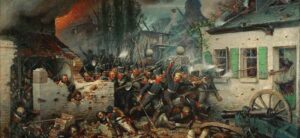

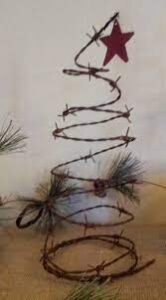 Christmas is well and truly over and today is Epiphany. The remains of that day in December have been long eaten. The last mince pie signalled the end of what has increasingly become a secular holiday, given over to gift giving and delays in getting anywhere. Our Christmas tree will remain until Candlemas. The hymns of 2nd February lack the gentleness of the Yuletide but have the robustness of the Presentation of Christ, the Circumcised, in the Temple.
Christmas is well and truly over and today is Epiphany. The remains of that day in December have been long eaten. The last mince pie signalled the end of what has increasingly become a secular holiday, given over to gift giving and delays in getting anywhere. Our Christmas tree will remain until Candlemas. The hymns of 2nd February lack the gentleness of the Yuletide but have the robustness of the Presentation of Christ, the Circumcised, in the Temple.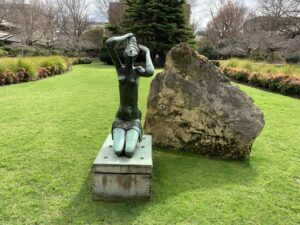
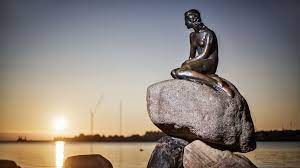
 We at home have our own sculpture of one of the Pleiades carved by a Yorta Yorta man and painted by a Yorta Yorta woman. The Pleiades are the seven daughters of the Titan god Atlas and the ocean nymph Pleione. They look down upon us from their celestial home. The representation we have is made from mallee wood. It is superb.
We at home have our own sculpture of one of the Pleiades carved by a Yorta Yorta man and painted by a Yorta Yorta woman. The Pleiades are the seven daughters of the Titan god Atlas and the ocean nymph Pleione. They look down upon us from their celestial home. The representation we have is made from mallee wood. It is superb.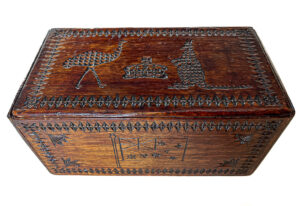
 Mahon cited the agency’s recommendations to seek out updated COVID booster shots, as well as taking other precautions like improving ventilation, testing before gathering, or masking in high COVID areas.
Mahon cited the agency’s recommendations to seek out updated COVID booster shots, as well as taking other precautions like improving ventilation, testing before gathering, or masking in high COVID areas.
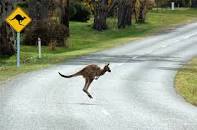

 We met a few people once in Ceduna like Jay Pasachoff whose death, at 79 years of age on November 20th, was reported in an obituary in a recent Economist (December 10-16th). In Ceduna there was a total eclipse of the sun in 2002, and the Allens and the Best-Sargeants decided to venture across to view it. Like much of which we did together, it was a spur of the moment decision. When we had done the same for the Sydney Olympics, we bought the original package, which included tickets for the Opening Ceremony. That spur of the moment decision was timely; the proposed trip to Ceduna was not.
We met a few people once in Ceduna like Jay Pasachoff whose death, at 79 years of age on November 20th, was reported in an obituary in a recent Economist (December 10-16th). In Ceduna there was a total eclipse of the sun in 2002, and the Allens and the Best-Sargeants decided to venture across to view it. Like much of which we did together, it was a spur of the moment decision. When we had done the same for the Sydney Olympics, we bought the original package, which included tickets for the Opening Ceremony. That spur of the moment decision was timely; the proposed trip to Ceduna was not.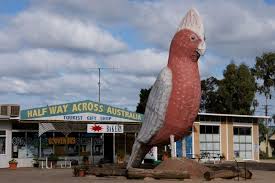 However, on this occasion we went the inland route through both the townships of Wudinna (where there is a mini-Uluru, Mount Wudinna) and Kimba (where the Big Galah glowers down upon the traveller). The second problem which had faced us was there was no accommodation in either Ceduna or Streaky Bay. We should have anticipated that, given that Ceduna itself is isolated except for the Aboriginal communities in the West and Streaky Bay in the East. Any other accommodation was over 100 kilometres away and only in a caravan park. Fortunately, I knew some of the Prideaux family and I contacted one of the elders whom I prefer not to name for cultural reasons, and she said they had an empty Aboriginal owned house in Ceduna. Yes, she said we could have it for the week. Given how difficult accommodation was, it was a Godsend to be able to rent such a three bed-roomed house in the centre of town.
However, on this occasion we went the inland route through both the townships of Wudinna (where there is a mini-Uluru, Mount Wudinna) and Kimba (where the Big Galah glowers down upon the traveller). The second problem which had faced us was there was no accommodation in either Ceduna or Streaky Bay. We should have anticipated that, given that Ceduna itself is isolated except for the Aboriginal communities in the West and Streaky Bay in the East. Any other accommodation was over 100 kilometres away and only in a caravan park. Fortunately, I knew some of the Prideaux family and I contacted one of the elders whom I prefer not to name for cultural reasons, and she said they had an empty Aboriginal owned house in Ceduna. Yes, she said we could have it for the week. Given how difficult accommodation was, it was a Godsend to be able to rent such a three bed-roomed house in the centre of town.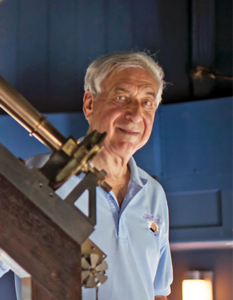 Jack Pascachoff was, for 50 years until his death, the Professor of Astronomy at Williams College Massachusetts and director of its Hopkins Observatory. To him “the perfect alignment, in solemn darkness, of the celestial bodies that mean most to us” gave a primal thrill that was indescribable. As a self-styled “umbraphile”, a shadow-lover, his greatest joy was to stand in that brief darkness cast by the shadow of the Moon”. His College is ranked as top in national liberal arts across the USA, and is located in Williamstown, Massachusetts, in the Berkshires and is one of the oldest colleges in the country. The school was originally a men’s college; women were first admitted in 1971 – almost all students are resident.
Jack Pascachoff was, for 50 years until his death, the Professor of Astronomy at Williams College Massachusetts and director of its Hopkins Observatory. To him “the perfect alignment, in solemn darkness, of the celestial bodies that mean most to us” gave a primal thrill that was indescribable. As a self-styled “umbraphile”, a shadow-lover, his greatest joy was to stand in that brief darkness cast by the shadow of the Moon”. His College is ranked as top in national liberal arts across the USA, and is located in Williamstown, Massachusetts, in the Berkshires and is one of the oldest colleges in the country. The school was originally a men’s college; women were first admitted in 1971 – almost all students are resident.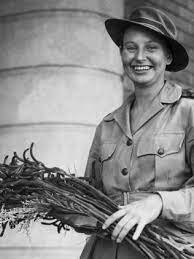
 My wife’s poached eggs are sublime. In Italian, poached eggs are called uova camicia, literally eggs in a shirt. The shirt analogy gives an impression of a free-flowing white tail floating in the hot spring water. These are not the poached eggs, neat compact white nuggets, uova in canovaccio , highly professional but in the end lacking the abandon of my wife’s expertise.
My wife’s poached eggs are sublime. In Italian, poached eggs are called uova camicia, literally eggs in a shirt. The shirt analogy gives an impression of a free-flowing white tail floating in the hot spring water. These are not the poached eggs, neat compact white nuggets, uova in canovaccio , highly professional but in the end lacking the abandon of my wife’s expertise. There have been memorable breakfasts. One was in a hotel on the island of Guernsey, where the boiled eggs were just “runny” right in which to dip “the soldier toast”. The other was at the Randolph Hotel looking out on the Oxford streetscape and tucking into a plate of kippers. Then I have also written a poem about the time we had breakfast on the Moonie River among the coolabah trees, which is soon to be published. The Moonie flows by the settlement of Flinton, where we were staying at the time, in Southern Queensland near the NSW border, before emptying into the Barwon River near St George.
There have been memorable breakfasts. One was in a hotel on the island of Guernsey, where the boiled eggs were just “runny” right in which to dip “the soldier toast”. The other was at the Randolph Hotel looking out on the Oxford streetscape and tucking into a plate of kippers. Then I have also written a poem about the time we had breakfast on the Moonie River among the coolabah trees, which is soon to be published. The Moonie flows by the settlement of Flinton, where we were staying at the time, in Southern Queensland near the NSW border, before emptying into the Barwon River near St George.
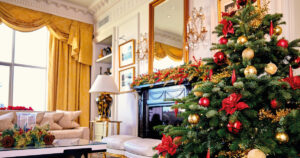 For a couple of years in the 1980s, we spent Christmas at the Savoy Hotel in a suite which enabled us to look straight down the Thames and Christmas lunch was in the Savoy Grill. One of the offspring who had taken a year off to fence in Paris and Budapest (he was actually based in the latter but had a great many contacts in the stylishly named Racing club in Paris) came over to London to have lunch with us. The food was excellent; the wine flowed; the jollification found him taking off his jacket. The Christmas cracker, suitably extravagant, yielded a parachuting man. Never mind that the son draped the parachute, to which a tiny figurine was attached, on his head so that the figurine was dangling over his nose. One of the waiters sidled up to him and murmured: “It appears that Sir’s jacket has slipped from Sir’s shoulders. Perhaps I could help Sir to put Sir’s jacket back on.”
For a couple of years in the 1980s, we spent Christmas at the Savoy Hotel in a suite which enabled us to look straight down the Thames and Christmas lunch was in the Savoy Grill. One of the offspring who had taken a year off to fence in Paris and Budapest (he was actually based in the latter but had a great many contacts in the stylishly named Racing club in Paris) came over to London to have lunch with us. The food was excellent; the wine flowed; the jollification found him taking off his jacket. The Christmas cracker, suitably extravagant, yielded a parachuting man. Never mind that the son draped the parachute, to which a tiny figurine was attached, on his head so that the figurine was dangling over his nose. One of the waiters sidled up to him and murmured: “It appears that Sir’s jacket has slipped from Sir’s shoulders. Perhaps I could help Sir to put Sir’s jacket back on.”
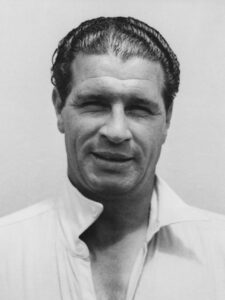

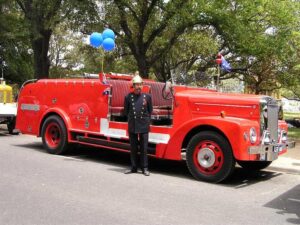 The “mud match” was cracking on, and there was much student activity, when the inevitable happened. Somebody broke the fire alarm in the Union, and before long, with bells ringing, the fire cart arrived driving through the milling mob in front of the Union, where it stopped. Before the firemen could get out of their vehicle, some idiot student dumped a bucket of mud over them.
The “mud match” was cracking on, and there was much student activity, when the inevitable happened. Somebody broke the fire alarm in the Union, and before long, with bells ringing, the fire cart arrived driving through the milling mob in front of the Union, where it stopped. Before the firemen could get out of their vehicle, some idiot student dumped a bucket of mud over them. The core of these later proposals was universality. Every Australian was entitled to free care – medical and hospital care; and for pensioners and other poor people identified, free drugs provided they were on a benefit schedule or made available through a hospital pharmacy. The government set a tax levy to cover the cost of Medicare.
The core of these later proposals was universality. Every Australian was entitled to free care – medical and hospital care; and for pensioners and other poor people identified, free drugs provided they were on a benefit schedule or made available through a hospital pharmacy. The government set a tax levy to cover the cost of Medicare.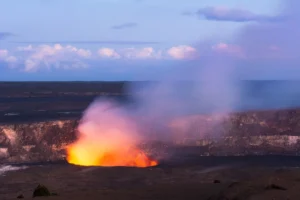
 When you destroy that trust, then in the end you believe in nobody. You are in a dark forest inhabited by the symbols of demons or warlocks or any of the representations of Beelzebub, because they are the enemy – and you alone are the symbol of purity. What has happened to America is a man with artificial golden mane, golden face, golden geegaws (unsurprising given from ancient times religious icons are smothered in gold) burst upon a country, already conspiracy ripened by the pastors of the Second Coming and satanic interpretations of the Book of Revelations. Coupled this with those playing in the shadow isolation of video violence and how can anybody trust anybody. In the end the one supreme person who did not trust, who never trusted the law, did not understand impartiality reigns supreme with all the bodies whom he/she/it did not trust littered all around.
When you destroy that trust, then in the end you believe in nobody. You are in a dark forest inhabited by the symbols of demons or warlocks or any of the representations of Beelzebub, because they are the enemy – and you alone are the symbol of purity. What has happened to America is a man with artificial golden mane, golden face, golden geegaws (unsurprising given from ancient times religious icons are smothered in gold) burst upon a country, already conspiracy ripened by the pastors of the Second Coming and satanic interpretations of the Book of Revelations. Coupled this with those playing in the shadow isolation of video violence and how can anybody trust anybody. In the end the one supreme person who did not trust, who never trusted the law, did not understand impartiality reigns supreme with all the bodies whom he/she/it did not trust littered all around.